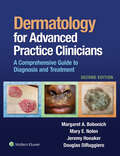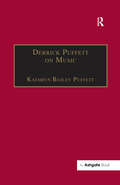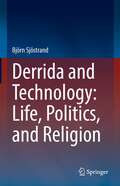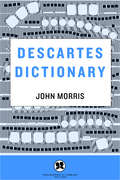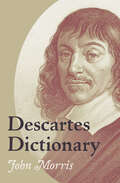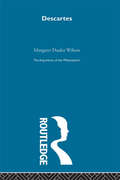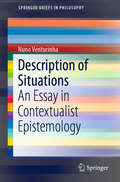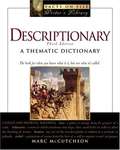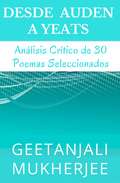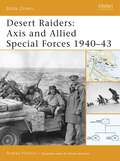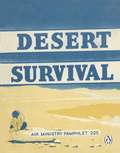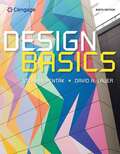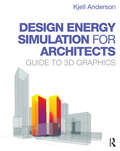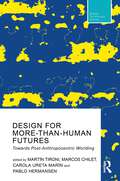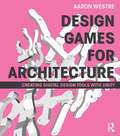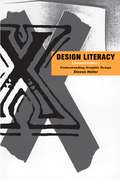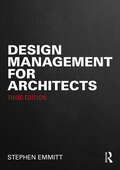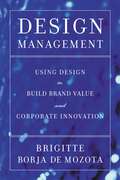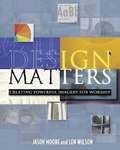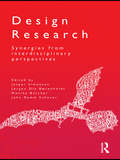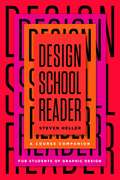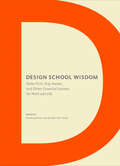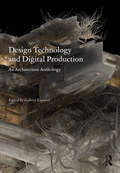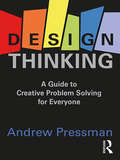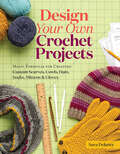- Table View
- List View
Dermatology for Advanced Practice Clinicians: A Practical Approach to Diagnosis and Management
by Margaret Bobonich Mary Nolen Jeremy Honaker Douglas DiRuggieroThe newly updated, abundantly illustrated Dermatology for Advanced Practice Clinicians: A Comprehensive Guide to Diagnosis and Treatment, 2nd Edition is your complete, evidence-based guide to accurate and successful assessment, diagnosis, and treatment of cutaneous diseases. Focusing on the most common and most critical skin conditions, this expertly-written guide offers essential dermatology knowledge for diagnosing and managing a broad range of skin, hair, and nail conditions. Whether in primary care or full-time dermatology, this comprehensive text is both an ideal foundation for new practitioners and an essential companion to experienced clinicians.
Derrick Puffett on Music
by Kathryn Bailey Puffett'I listen to a piece and ask myself what has made the greatest impression on me. What has moved me the most about it, what has excited me the most, what it is I want to write about, what sets my mind working, what sets off my imagination.' Derrick Puffett's description to a group of Cambridge graduate students of his approach to listening and writing about music is clearly evident in the articles reprinted in this collection. For the first time, the book makes available in one place writings previously widely dispersed amongst many journals and symposia. Resonances emerge that cross from essay to essay, with the result that a larger, coherent project is revealed. Insistent on the need of music analysis to be accompanied by a wider historical knowledge, Puffett believed strongly that the methods to be adopted on each occasion must be dictated by the music at hand. His work on Bruckner, Strauss, Webern, Zemlinsky, Delius and Debussy is of enduring importance to the study of music. With a prose style distinguished for its elegance and clarity, Puffett's writings will enhance the understanding and enjoyment of the music that he discusses amongst students and teachers alike.
Derrida and Technology: Life, Politics, and Religion
by Björn SjöstrandThis book is the first monograph that takes a comprehensive approach to Jacques Derrida as a philosopher of technology. It refines and complements his mainstream image as a philosopher of language and deconstructionist of classical literary and philosophical texts. This volume outlines the key features of Derrida’s alternative philosophy of technology, a philosophy which Sjöstrand argues, avoids the problems associated with, on the one hand, a Heideggerian orientation, which completely separates thinking and technology and, on the other, an empirically oriented ”post-phenomenology” that can be said to be hegemonic within the field today.Based on a sustained interpretation of Derrida, and a robust, coherent philosophy of technology, a phenomenology of technology is developed that, in a radical way, extends the concept of technology to cover the entire field of phenomenology. This places the technological not in opposition to humanity, but rather always already in close proximity to man and, consequently, to life, ethics, politics, democracy and religion. Strikingly, this important aspect of Derrida’s thinking is only rarely analyzed or discussed by his many exegetes. This text appeals to graduates and researchers working on Derrida, phenomenology, and the philosophy of technology.
Descartes Dictionary
by John MorrisThe purpose of this Descartes Dictionary is to bring together as many as possible of the technical and special terms in Descartes' writings with their definitions in Descartes' own words. There are also implicit characterizations of the meanings of many words, and a handful of entries were included simply for their own sake--because Descartes had something interesting to say about his life and world. All of the entries, or almost all of them, have been newly translated for this volume. There are many reasons for preparing new translations: the language in the older translations is archaic and often inaccurate; many of Descartes' most important works have never been translated into English; and modern translations vary in quality and style. What is most important, though, is that the old translations simply failed to pay attention to the technical language that Descartes used, and so blurred some of the most important distinctions that he made. Professor Morris is on the faculty of Kirkland College.
Descartes Dictionary
by John MorrisAn accessible guide to understanding many of the complex technical and special terms implemented by the seventeenth-century philosopher. French philosopher René Descartes authored many works in his lifetime like Discourse on the Method and Principles of Philosophy. But while his &“I think, therefore I am&” may be easy to grasp, much of the terminology he uses can be challenging. Descartes would frequently introduce terms in his writings without explanation, and if there were such a definition, it is in one of his letters or an obscure, unpublished work. In Descartes Dictionary, author John M. Morris collects as many as possible of the technical and special phrases Descartes employed in his writings along with their definitions in Descartes&’s own words. This volume is a great companion book for anyone studying the philosopher&’s works and will certainly enrich their understanding.
Descartes-Arg Philosophers (Arguments Of The Philosophers Ser.)
by Margaret Dauler WilsonFirst Published in 1999. Routledge is an imprint of Taylor & Francis, an informa company.
Description of Situations: An Essay in Contextualist Epistemology (SpringerBriefs in Philosophy)
by Nuno VenturinhaThis book approaches classic epistemological problems from a contextualist perspective. The author takes as his point of departure the fact that we are situated beings, more specifically that every single moment in our lives is already given within the framework of a specific context in the midst of which we understand ourselves and what surrounds us.In the process of his investigation, the author explores, in a fresh way, the works of key thinkers in epistemology. These include Bernard Bolzano, René Descartes, Gottlob Frege, Edmund Husserl, Immanuel Kant and Ludwig Wittgenstein, but also contemporary authors such as Stewart Cohen, Keith DeRose, David Lewis, Duncan Pritchard, Ernest Sosa and Charles Travis. Some of the topics covered are attributions of knowledge, the correspondence theory of truth, objectivity and subjectivity, possible worlds, primary and secondary evidence, scepticism, transcendentalism and relativism. The book also introduces a new contextualist thought-experiment for dealing with moral questions.Contextualism has received a great deal of attention in contemporary epistemology. It has the potential to resolve a number of issues that traditional epistemological approaches cannot address. In particular, a contextualist view opens the way to an understanding of those cognitive processes that require situational information to be fully grasped. However, contextualism poses serious difficulties in regard to epistemic invariance. This book offers readers an innovative approach to some fundamental questions in this field.
Descriptionary (3rd edition)
by Marc MccutcheonAre you exerting your corrugator overmuch trying to remember what to call more than one ferret? This combination of a reverse dictionary and thesaurus groups terms by basic themes, making it easy to find that ferrets in a communal situation constitute a "business." The groups include animals, architecture, clothing, electronics, finance, the human body, language, medicine, the military, music, performing arts, the physical sciences, religion, sports, tools, transportation, and weapons, with categories such as British terms, Internet chatting, and street slang added for this edition. The book is rounded out with an index that helps readers locate words they think they might know, and a list of words and expressions that they really should know. Annotation ©2004 Book News, Inc., Portland, OR (booknews.com)
Desde Auden a Yeats: Análisis Crítico de 30 Poemas Seleccionados
by Geetanjali Mukherjee A. Carolina Álvarez y Karina G. MarchiniDesde Auden a Yeats: Análisis crítico de 30 poemas seleccionados por Geetanjali Mukherjee Este libro es una referencia rápida para los estudiantes de literatura inglesa que busquen ayuda al navegar la poesía de algunos de los grandes poetas del siglo XIX y XX. Este libro es una referencia rápida para los estudiantes de literatura inglesa que busquen ayuda para navegar la poesía de alguno de los grandes poetas del siglo XIX y XX. El libro contiene un an{alisis crítico y profundo de 30 poemas seleccionados de las obras de W. H. Auden, Ted Hughes, John Keats, Philip Larkin and W.B. Yeats. Con una colección de 30 ensayos, el libro tiene como fin ayudar a los alumnos de literatura a obtener un mirada de la vida y trabajo de cada poeta aquí presentado, como también una comprensión de los poemas tratados con la suficiente profundidad. EL LIBRO POSEE: * Una sección sobre la vida y trasfondo de cada poeta para comprender mejor las influencias detrás de sus poemas y obtener un mejor conocimiento del contexto de los poemas seleccionados. * Una explicación sencilla de cada poema. * Una explicación de los temas, motivos y símbolos utilizados en los poemas. * Un ensayo específico para cada poema en particular, analizado para el beneficio del estudiante de literatura. * Preguntas breves para que el estudiante reflexione sobre los temas subyacentes de los poemas. Es una guía invaluable para los estudiantes de literatura en colegios secundarios y universidades o cualquiera que desee obtener una profunda comprensión de algunos de los poemas más reconocidos del último siglo. Este libro es muy útil como guía de estudio y no debe substituir la lectura de los poemas (LOS POEMAS NO ESTÁN INCLUIDOS). Algunos de los poemas tratados son: * W.H. Auden – Blues del refugiado * Ted Hughes – Cuervo tiranosaurio * John Keats – Al otoño * Philip Larki
Desert Raiders: Axis and Allied Special Forces 1940-43
by Andrea MolinariAlthough harsh and inhospitable, the North African theatre of World War II proved to be a perfect environment for irregular warfare and the deployment of Special Forces. Following Italy's entry into the war in June 1940, the Western Desert became the background for a long conflict dominated by motorized units. The major combatants - Great Britain, Free France, Italy and Germany - all developed irregular units to exploit the unique conditions of the region with varying degrees of success. This book details the genesis, organization and tactics of these forces, including such famous units as the Long Range Desert Group and the Special Air Service.
Desert Survival (Air Ministry Survival Guide #3)
by A.M. Pamphlet 225THE ULTIMATE SURVIVAL GUIDE for anyone who thinks they'd survive the world's most hostile environments - or at least imagine they could do.-----------------------------First issued to airmen in the 1950s, the Air Ministry's Sea Survival guide includes original and authentic emergency advice to crew operating over the ocean. With original illustrations and text, these survival guides provide an insight to military survival techniques from a by-gone era.Packed with original line drawings and instruction in:- How to find water in a dry stream course- How to make a hat out of seat cushions- What to do in the event of meeting 'hostile parties'Focussing on one of the most unforgiving environments on Earth, Desert Survival is one of four reprints of The Air Ministry's emergency survival pamphlets. Others include:· Jungle Survival· Sea Survival· Arctic Survival
Design Basics
by David A. Lauer Stephen PentakFilled with hundreds of stunning examples of successful two-dimensional design, this how-to book explains design theory and gives students the tools needed to create successful designs. DESIGN BASICS presents art fundamentals concepts in full two- to four-page spreads, making the text practical and easy for students to refer to while they work.
Design Energy Simulation for Architects: Guide to 3D Graphics
by Kjell AndersonLeading architectural firms are now using in-house design simulation to help make more sustainable design decisions. Taking advantage of these new tools requires understanding of what can be done with simulation, how to do it, and how to interpret the results. This software-agnostic book, which is intended for you to use as a professional architect, shows you how to reduce the energy use of all buildings using simulation for shading, daylighting, airflow, and energy modeling. Written by a practicing architect who specializes in design simulation, the book includes 30 case studies of net-zero buildings, as well as of projects with less lofty goals, to demonstrate how energy simulation has helped designers make early decisions. Within each case study, author Kjell Anderson mentions the software used, how the simulation was set up, and how the project team used the simulation to make design decisions. Chapters and case studies are written so that you learn general concepts without being tied to particular software. Each chapter builds on the theory from previous chapters, includes a summary of concept-level hand calculations (if applicable), and gives comprehensive explanations with graphic examples. Additional topics include simulation basics, comfort, climate analysis, a discussion on how simulation is integrated into some firms, and an overview of some popular design simulation software.
Design For More-Than-Human Futures: Towards Post-Anthropocentric Worlding (Routledge Research in Design, Technology and Society)
by Martín Tironi Marcos Chilet Carola Ureta Marín Pablo HermansenThis book explores the work of important authors in the search for a transition towards more ethical design focused on more-than-human coexistence. In a time of environmental crises in which the human species threatens its own survival and the highest level of exacerbation of the idea of a future and technological innovation, it is important to discard certain anthropocentric categories in order to situate design beyond the role that it traditionally held in the capitalist world, creating opportunities to create more just and sustainable worlds. This book is an invitation to travel new paths for design framed by ethics of more-than-human coexistence that breaks with the unsustainability installed in the designs that outfit our lives. Questioning the notion of human-centered design is central to this discussion. It is not only a theoretical and methodological concern, but an ethical need to critically rethink the modern, colonialist, and anthropocentric inheritance that resonates in design culture. The authors in this book explore the ideas oriented to form new relations with the more-than-human and with the planet, using design as a form of political enquiry. This book will be of interest to academics and students from the world of design and particularly those involved in emerging branches of the field such as speculative design, critical design, non-anthropocentric design, and design for transition.
Design Games for Architecture: Creating Digital Design Tools with Unity
by Aaron WestreDesign Games for Architecture teaches you how to create playful software tools based on your architectural design processes, whether or not you are familiar with game design technology. The book combines the fun and engaging aspects of video games to ease the sometimes complex process of learning software development. By working through exercises illustrated with screen shots and code, you acquire knowledge about each step required to build useful tools you can use to accomplish design tasks. Steps include analysing design processes to identify their logic, translating that logic into a collection of objects and functions, then encoding the design procedure into a working software tool. Examples presented in the book are design games---tools that a designer “plays” like video games---that span a wide range of design activities. These software tools are built using Unity, free, innovative, and industry-leading software for video game development. Unity speeds up the process of software creation, offers an interface that will be familiar to you, and includes very advanced tools for creating forms, effects, and interactivity. If you are looking to add cutting-edge skills to your repertoire, then Design Games will help you sharpen your design thinking and allow you to specialize in this new territory while you learn more about your own design processes.
Design Literacy: Understanding Graphic Design
by Steven HellerThis update to the first book to provide explicit case histories of the successful marriage of form and content in graphic design explores more than 125 classic and contemporary works-30 of them brand new-explaining why they are aesthetically significant and how they function as good design. These thought pieces offer a vast taste of the aesthetic, political, historical, and personal issues that move today's global design community and fans.
Design Management for Architects
by Stephen EmmittThis unique and established guide to the management of design and designers has been comprehensively reimagined and updated. Written for students of architecture and early career architects, the book explores the benefits of design management from the context of managing design projects and the management of the architectural businesses. It aligns with the need for architects to improve design management competences and business skills as set out by the ARB and the RIBA.Design Management for Architects is presented in three parts. Part One is dedicated to explaining what design management is and what a design manager does. Part Two focuses on the main project stages and how design management can help to identify, explore, and deliver design value for clients, architects, and society. Part Three looks at how design management is applied within the architectural business and how it relates to successful projects and businesses. Emphasis is on the management of designers (people), design activities (processes) and outputs (information and products). Chapters include reflective exercises that can be addressed individually, or in small discussion groups to aid learning. Written in an accessible and engaging manner, the book is essential reading for students studying towards qualification as an architect and for nascent architects looking to improve their management competences.
Design Management: Using Design to Build Brand Value and Corporate Innovation
by Brigitte Borja De MozotaWritten by a leading authority in the fields of marketing and design, here is first book ever to bring together the theory and practice of design management. In eleven comprehensive chapters, Design Management offers time-tested tools for choosing the right design agency . . . integrating design in the organization . . . creating value and contributing to company performance . . . contributing to brand value and corporate vision . . . and implementing design projects. What's more, dozens of case studies, real-life examples, and leadership profiles illustrate essential theories from design, management, and marketing. An indispensable reference for every design and marketing professional.
Design Matters: Creating Powerful Imagery for Worship
by Len Wilson Jason MooreMany churches use visual technology in worship. Yet simply adding a screen and projector in a sanctuary doesn't automatically translate into growth and revitalization. This book helps worship-screen producers learn to "speak" a visual language. These time-tested design principles provide a basic framework for developing a visual literacy. The accompanying DVD includes graphic tutorials for creating art in Adobe Photoshop/Elements, time-saving techniques for achieving special effects, and helpful websites. To view a sample of the DVD, click here.To view the Midnight Oil seminar schedule, click here.
Design Research: Synergies from Interdisciplinary Perspectives
by Jesper SimonsenDesign Research is a new interdisciplinary research area with a social science orientation at its heart, and this book explores how scientific knowledge can be put into practice in ways that are at once ethical, creative, helpful, and extraordinary in their results. In order to clarify the common aspects – in terms of features and approaches – that characterize all strands of research disciplines addressing design, Design Research undertakes an in-depth exploration of the social processes involved in doing design, as well as analyses of the contexts for design use. The book further elicits ‘synergies from interdisciplinary perspectives’ by discussing and elaborating on differing academic perspectives, theoretical backgrounds, and design concept definitions, and evaluating their unique contribution to a general core of design research. This book is an exciting contribution to this little explored field, and offers a truly interdisciplinary approach to the treatment of design and the design process. It is valuable reading for students in disciplines such as design studies and theory, participatory design, informatics, arts based education, planning, sociology, and interdisciplinary programmes in humanities and technology.
Design School Reader: A Course Companion for Students of Graphic Design
by Steven HellerAn Essential Collection of Essays and Musings on Graphic Design from One of the Field's Leading Educators In this wide-ranging compilation, art director, writer, and lecturer Steven Heller shares his passion for graphic design with readers, whom he invites to consider that design can be discerned in all things natural and manmade. Developed as content for a class devoted to reading, this collection is not overtly about conventional design, but about a variety of topics viewed through the lens of design. Offered as a primer for undergraduate and graduate students, Design School Reader presents more than forty essays on subjects such as: The role of design in politicsVisual culture and the social impact of designKey moments in the history of typographyTechnological innovationsThe power of branding and logosEthical considerations and dilemmasImportant figures in the design world Divided into five parts—Design Language; Design Dialects; Politics, Ideology, Design; Business and Commerce; and Inspiration and Discoveries—each section features a collection of essays culled from Heller&’s extensive publications from the past several decades. At the end of every essay, readers will find discussion points to prompt further lines of inquiry. As Heller notes, &“The key is to read, discuss, and debate.&” Students, aficionados, and anyone with a healthy curiosity will thoroughly enjoy this illuminating and thought-provoking assemblage of perspectives on the practice.
Design School Wisdom: Make First, Stay Awake, and Other Essential Lessons for Work and Life
by Brooke Johnson and Jennifer Tolo PierceLearn to see the world with the smarts and visual acumen of a great designer. This treasure trove of pithy aphorisms, longer-form essays, and first-person interviews compiles years of design school education into one comprehensive yet compact book. Here are lessons in life and work, learned both in the classroom and on the job, from design teachers, students, and gurus, covering everything from practical know-how to big-picture brilliance. Design School Wisdom provides a well of inspiration for aspiring designers, visual thinkers, students, grads, and professional creatives looking to reinvigorate their practice.
Design Technology and Digital Production: An Architecture Anthology
by Gabriel EsquivelThis book is a rigorous account of architecture’s theoretical and technological concerns over the last decade. The anthology presents projects and essays produced at the end of the first digital turn and the start of the second digital turn. This anthology engages and deploys a variety of discourses, topics, criteria, pedagogies, and technologies, including some of today’s most influential architects, practitioners, academics, and critics. It is an unflinchingly rigorous and unapologetic account of architecture’s disciplinary concerns in the last decade. This is a story that has not been told; in recent years everything has been refracted through the prism of the post-digital generation.Design Technology and Digital Production illustrates the shift to an architectural world where we can learn with and from each other, develop a community of new technologies and embrace a design ecology that is inclusive, open, and visionary. This collection fosters a sense of shared experience and common purpose, along with a collective responsibility for the well-being of the discipline of architecture as a whole.
Design Thinking: A Guide to Creative Problem Solving for Everyone
by Andrew PressmanDesign thinking is a powerful process that facilitates understanding and framing of problems, enables creative solutions, and may provide fresh perspectives on our physical and social landscapes. Not just for architects or product developers, design thinking can be applied across many disciplines to solve real-world problems and reconcile dilemmas. It is a tool that may trigger inspiration and the imagination, and lead to innovative ideas that are responsive to the needs and issues of stakeholders. Design Thinking: A Guide to Creative Problem Solving for Everyone will assist in addressing a full spectrum of challenges from the most vexing to the everyday. It renders accessible the creative problem-solving abilities that we all possess by providing a dynamic framework and practical tools for thinking imaginatively and critically. Every aspect of design thinking is explained and analyzed together with insights on navigating through the process. Application of design thinking to help solve myriad problems that are not typically associated with design is illuminated through vignettes drawn from such diverse realms as politics and society, business, health and science, law, and writing. A combination of theory and application makes this volume immediately useful and personally relevant.
Design Your Own Crochet Projects: Magic Formulas for Creating Custom Scarves, Cowls, Hats, Socks, Mittens & Gloves
by Sara DelaneyYou love to crochet, but you&’re tired of the granny square and other predictable projects. Let celebrated crochet teacher Sara Delaney help you expand your skills while showing you how to create custom-fit wearable accessories. Delaney&’s unique, flexible formulas let crocheters of all levels easily design scarves, cowls, fingerless mitts, mittens, gloves, hats, and socks. With fill-in-the-blank templates and a stitch dictionary, you can use your favorite yarn and stitch pattern, and make accessories that fit perfectly. Delaney offers a starter course in the technique with 18 of her own original patterns, along with the formulas she used to create them. The companion online calculator helps create your customized patterns even more quickly!
